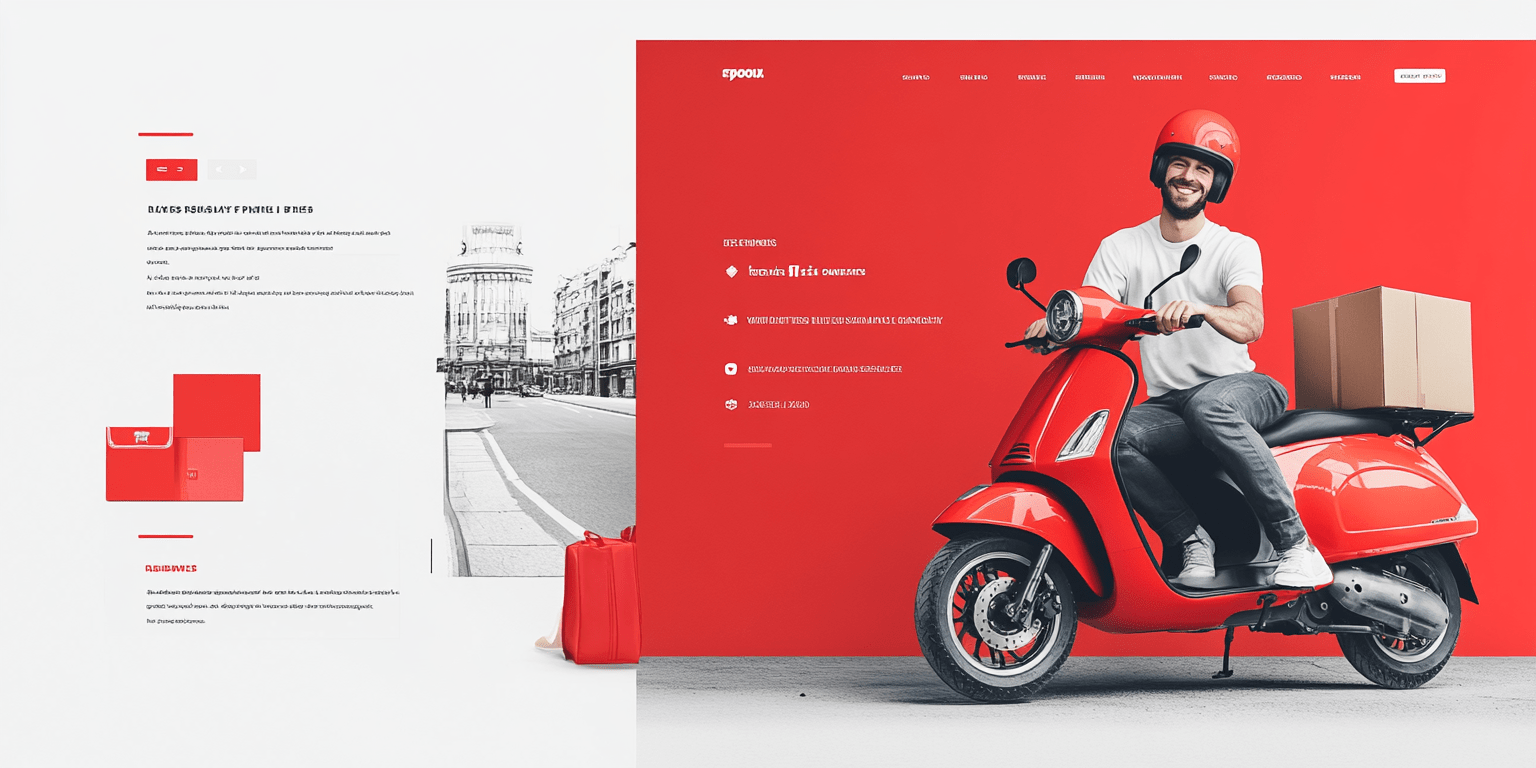Even small courier services are gradually moving away from manually processing orders through phone calls or messaging apps. This is because the number of details that need to be accounted for with each request keeps growing – from time and address to payment methods and types of shipments. When this information is scattered, it leads to confusion, delays, and customer dissatisfaction. That’s why companies are switching to full-featured websites, where everything can be recorded, agreed upon, and processed without unnecessary involvement. However, such a platform must be tailored to the specific needs of the delivery industry, where every detail matters. So let’s focus on how to order a website for a courier service, what to consider during development, and which aspects deserve particular attention.

What an effective courier website should look like
In this industry, a website must be designed in a way that allows the client to move forward confidently, without doubts or unnecessary steps. This applies to everything – from the first visual impression to the final confirmation of the order. Navigation should be intuitive, the structure – consistent, and every element – placed predictably without requiring additional explanation, including button placement. When the interface smoothly guides the user without overwhelming or forcing them to go back, it creates a sense of confidence and trust in the service. For more details, read our article on food delivery website development, where we show how interface design influences convenience and user trust.
This sense of confidence must be built into the logic of the site from the structural stage. If the route is tied to an address, the time to an available slot, and delivery methods are limited only to what’s actually offered, the user doesn’t waste effort on redundant actions. Each step leads to a logical next one, forming a smooth and natural process. This is the difference between a set of sections and a well-thought-out system. Such a structure supports user behavior at every stage, from selecting parameters to confirming the order. It doesn’t just accompany the process – it organically enhances it, creating comfortable and predictable interaction conditions.
Key sections a courier service website should include
Regardless of the project’s size or specifics, website development starts with building a clear structure. It defines how user-friendly the site will be, how quickly visitors find what they need, and how transparently the service operates. While content may vary, several core sections should be included:
- Personal account. Allows clients to view order history, track delivery statuses, update profile details, and communicate with the service, easily returning to a saved cart.
- Online calculator. Helps estimate service costs based on weight, address type, approximate timing, and service zone, forming a clear idea of pricing before submitting a request.
- Delivery tracking. Real-time tracking lets users see where the courier is, what route is being followed, and when the delivery is expected – all in one interface with no extra steps.
- FAQ section. Serves as a first point of assistance, covering typical situations, usage terms, and collaboration formats, saving time for both the company and the client.
- Service coverage map. A visual map showing regions and districts helps immediately determine whether the service is available at a specific address, with no need for additional clarifications.
- Contact form. A tool for submitting messages, clarifying conditions, or initiating an order – capturing the date, time, pickup address, and contact info, with follow-up from the company.
Essential functionality for a delivery website
A good website should support all standard actions the client performs when placing an order, ensuring the entire process is smooth, fast, and requires no extra assistance. That’s why it’s important to include all essential functions from the start, such as:
| Selecting delivery date and time. | The ability to immediately choose a day and time slot gives the customer a sense of control and helps the service plan routes efficiently without unexpected changes. |
| Auto-fill for address fields. | When the system suggests the street name, house number, and district, the user doesn’t waste time retyping and avoids errors during checkout. |
| Route mapping. | As soon as the address is entered, the system generates a route and displays it on the map – with zones, points, and estimated time – so the customer sees the full picture. |
| Inputting weight and dimensions. | Customers enter package parameters, and the system instantly shows how they match tariff limits, allowing details to be adjusted before final confirmation. |
| Online payment integration. | The website enables full order completion, including payment – all within a single form, with no redirection to external services, ensuring a cohesive process. |
| Personalized discount system. | Discounts are applied automatically – based on order history, volume, and address type – and are visible directly during checkout without additional steps. |

Why order a website for a courier service
Experience shows that a corporate website development in this sector brings several clear benefits:
- Reduced workload for staff. With automatic order intake, employees don’t need to confirm details manually – the system records everything and forwards it for processing without delay.
- Faster order handling. All submissions go directly to the internal panel, speeding up assignment to the delivery grid and allowing efficient distribution across locations.
- Instant status updates. Courier routes are displayed in real time, showing location, destination, and timestamps, so both dispatcher and customer always have up-to-date information.
- Real-time action control. All updates – from status changes to time adjustments – are stored in one dashboard, giving the administrator a full overview and allowing quick process management.
- Analytics for orders and delivery zones. The system tracks all operational parameters – volume, geography, average completion time – and presents reports in a format suitable for performance analysis.
- Direct customer interaction. The entire communication process – from request to finalization – takes place within the website, eliminating the need for third-party tools and increasing user trust.
What affects the cost of a turnkey courier site
When it comes to pricing, it’s important to understand why a website without SEO won’t be effective – even the best logic brings no results if users can’t find the site in search. That’s why we always include SEO in the project estimate, adapting it to the client’s business needs. But that’s not the only factor. Scenarios like routing, time tracking points, multiple payment methods, CRM integration, management panel, and full reporting must also be considered from the beginning – they significantly increase project scope.
The format of interaction also affects the final cost. If the project requires full immersion in the business model – with detailed planning, function adaptation, testing, and support – development becomes more complex, and every stage must meet stricter requirements. In such cases, prior coordination is crucial – structure is defined collaboratively, decisions are made step by step, and development logic is tied to real operational needs. All of this demands more time and team involvement, directly impacting the final price.
Need a platform that attracts an audience and helps customers solve practical issues? Then our team is ready to help. Our experienced specialists will guide you on how to design an effective homepage, suggest the optimal website format, and carry out the project in practice, precisely following all agreements and accounting for your business specifics. Interested in the offer? Contact us – the QuatroIT web studio is at your service!











